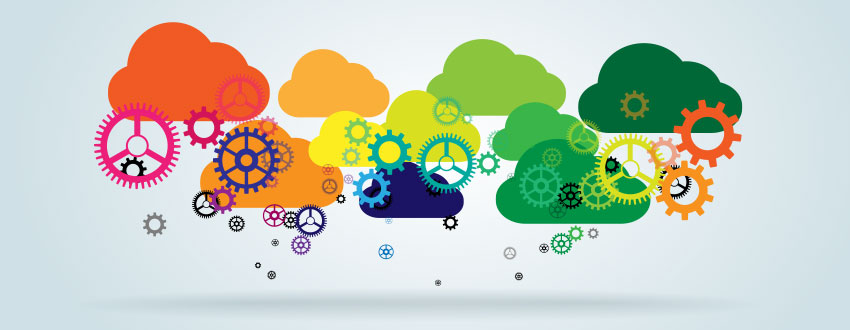
The Cloud vs. SaaS
The cloud and SaaS may seem interchangeable when you consider their similarities. However, these two terms refer to very different things, both with their own defining characteristics.
What is the Cloud?
Although the cloud has skyrocketed in popularity over the last few years, it’s okay to not be 100% sure what it is exactly. The cloud or cloud computing, neither fluffy nor white, refers to software and services that run on the Internet, rather than a local computer or server.
The cloud is not a physical entity, but rather a vast network of remote servers which digitally intertwine to operate as a single ecosystem. The servers are designed to run applications, store and manage data, or deliver content or a service such as web mail, video streaming, social media, and more.
Related Reading: Cloud Integrations
What is SaaS?
SaaS, or Software as a Service, refers to a software licensing and delivery model where a third-party provides certain applications (typically via subscription) and makes them available to customers over the Internet, via one central host.
It’s a method of software delivery that allows data to be accessed from any device connected to the internet via a web browser. Some examples of popular SaaS technologies we use today are Google Apps like Gmail and Google Drive, Dropbox, and Slack.
Know Your Terms: GoAnywhere Glossary
The Main Similarities – and Differences
SaaS and cloud computing are not equivalent. SaaS is a form of cloud computing, or cloud-based software – but not all cloud software is SaaS.
When you run a SaaS application, log in to the vendor’s site and access it, you could say that SaaS applications are running “in the cloud.” That would be correct, but SaaS applications are not the cloud. They do, however, work together to bring easy-to-access and relatively cost-effective software applications for a variety of end users.
How, Where, and Which Users Access Them
As one of the most popular forms of cloud computing, SaaS allows users to connect and utilize cloud-based apps all over the Internet. The cloud, however, provides computing resources that aren’t bound to any specific location.
The cloud consists of infrastructure and services you can lease, such as virtual computers/server, communications and messaging capacity, data storage capacity, network capacity, and development environments. It’s most commonly used by software developers, application vendors, corporate IT departments, and savvy computer users. With SaaS, the fully functional applications are available to the general public, typically via subscription.
SaaS isn’t a way to build applications, nor is it a plug-in to other applications – it is never something that will sit on a machine. SaaS is truly a full-blown application, not a component of something else. Instead of the application running on servers and data storage in your data center, it runs within the vendor’s data center.
How You Get Access
With SaaS, you are renting the service over a period of given time, usually per month or at an annual basis (although some are free to use). Rather than having to pay for ongoing operation and maintenance costs, the SaaS vendor oversees running the application on their infrastructure. Concurrently, with SaaS you do lose some control over management and customization of the application.
With the cloud, you are paying a rental fee to lease the application on a month-to-month or annual basis as well. However, you only pay for what you need, so startup costs can be substantially lower than on-premises solutions, or you can choose to expand. Unlike SaaS, this method allows you to completely maintain and the manage the software as you see fit.
GoAnywhere MFT and SaaS are a Dynamic Duo
Let go of the uncertainty of managing cloud infrastructure or installing software on-premises. GoAnywhere MFTaaS, our SaaS MFT solution, has you covered.
